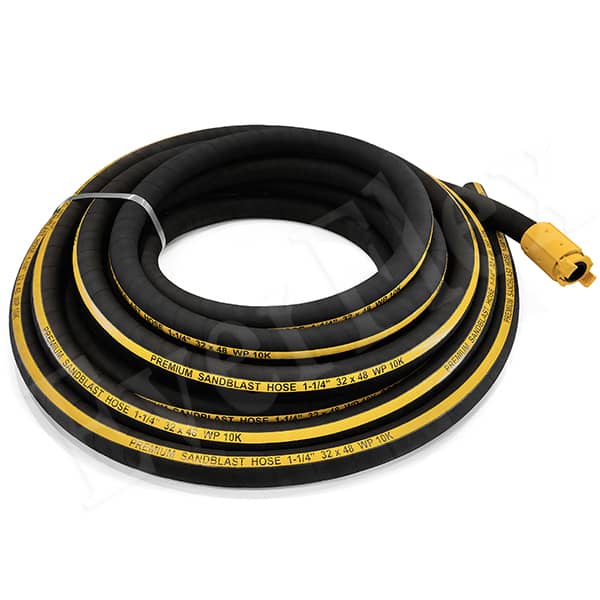Blast hoses have a wide range of applications across various fields. For instance, they are commonly used with sandblast machines, and they are also employed for rust removal purposes in factories. Given their significance in these applications, selecting a high-quality blasting hose is of utmost importance. Here are some crucial factors that you should take into account:
The first factor to consider is the inner rubber of the hose.
A good quality inner rubber should possess excellent abrasion resistance. Typically, we use the abrasion coefficient to quantify this characteristic. It’s important to note that the higher the abrasion coefficient, the poorer the abrasion resistance of the hose. In the case of high-quality hoses, the abrasion resistance is typically measured at less than 40mm³. Medium-quality hoses, on the other hand, have an abrasion resistance in the range of approximately 50 to 65mm³. The lowest quality hoses usually exhibit an abrasion resistance of around 110mm³. Additionally, there is the ISO 4969 standard which serves as a benchmark. So, when you are in the process of choosing a blasting hose, it is essential to verify that it meets this standard first.
The next significant factor is the hose’s pressure resistance.
This property is largely influenced by the reinforcing materials used in the hose’s construction. There is a considerable difference between hoses with 1 layer or 2 layers of fiber reinforcement, as well as those with 1 or 2 layers of steel wire reinforcement.
In conclusion, when you are making a decision about which blast hose to select, you should carefully consider these two key factors: the abrasion coefficient and the type and number of reinforcing layers.







